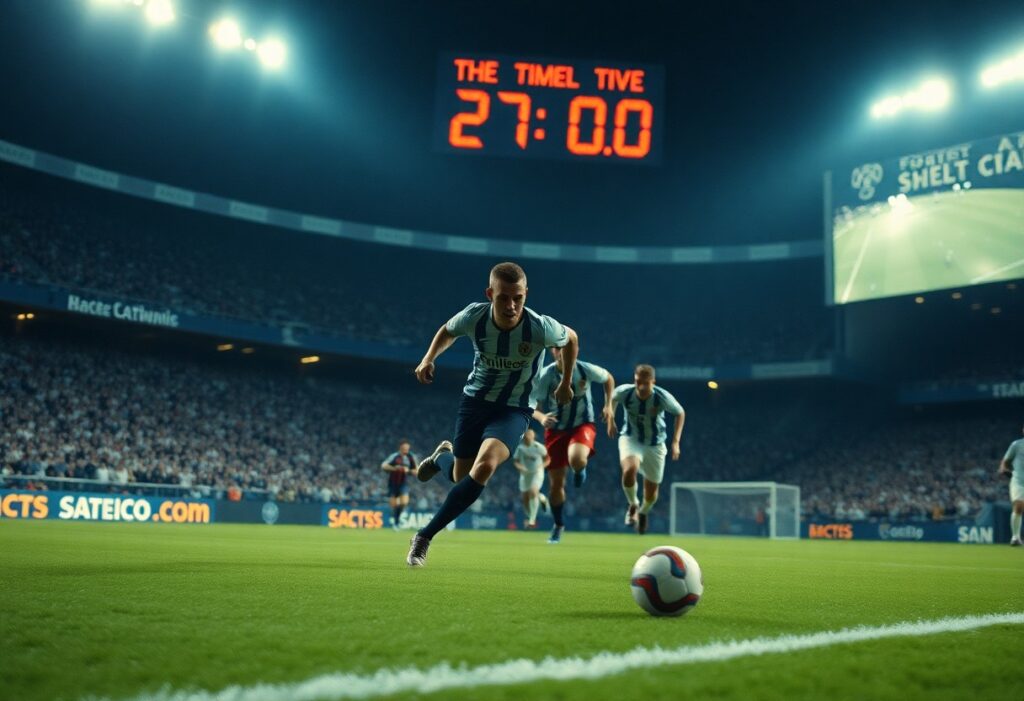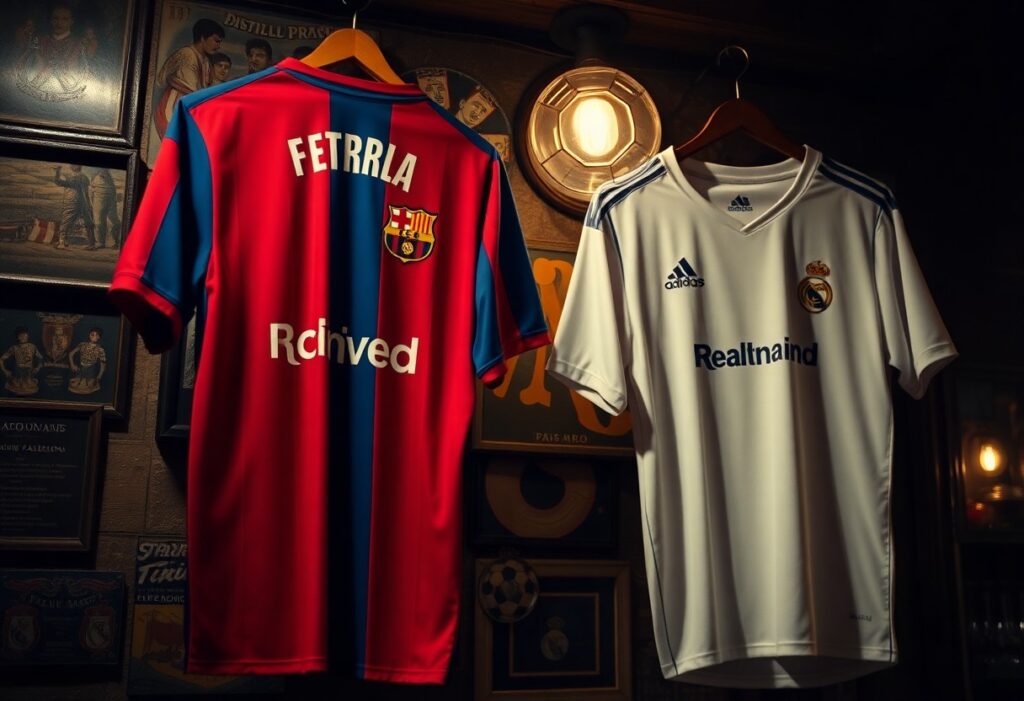
You’ve probably witnessed some incredible quick goals during your football viewing experience, but the fastest recorded goal in football history was scored in just 2.8 seconds by Ricardo Olivera in 1998. Your understanding of lightning-fast strikes becomes even more impressive when you consider that Alan Shearer’s 9.9-second goal at Euro 2004 remains the quickest in major international tournament history. These split-second moments of brilliance demonstrate how football can change in an instant, with players capitalizing on defensive errors or kick-off situations to create unforgettable sporting history that leaves spectators stunned.
Legendary Moments: The Fastest Goals in Recorded History
You’ll find that football’s fastest goals exist in a realm where seconds feel like eternity and split-second decisions create immortal legends. Alan Shearer’s 7.69-second strike against Germany in 2000 remains one of international football’s most explosive openings, while Hakan Şükür’s 11-second World Cup goal in 2002 still holds the tournament record. These lightning-fast moments transcend typical match narratives, transforming stadiums into cauldrons of disbelief and creating stories that survive decades beyond the final whistle.
Spotlight on the Record Holders
Nawaf Al-Abed’s name sits atop the official records with his 2.8-second goal for Al-Hilal in 2009, though various claims exist for even faster strikes. Vuk Bakić’s reported 2.02-second goal in Serbian football remains disputed due to timing methodology differences. You’ll discover that most record holders share common traits: exceptional anticipation, perfect positioning at kickoff, and teammates willing to execute immediate back-passes. These players didn’t stumble into history—they recognized split-second opportunities that most footballers would miss entirely.
Emotional Impact on Fans and Teams
Lightning goals create psychological shockwaves that ripple through entire stadiums within heartbeats. Opposing fans experience collective stunned silence while supporters erupt in scenes of pure euphoria, often struggling to process what they’ve witnessed. Teams scoring these goals gain instant psychological dominance, while opponents face the crushing reality of falling behind before settling into match rhythm.
The emotional aftermath extends far beyond the immediate celebration or devastation. You witness how these goals become defining moments in club folklore, with fans recounting exactly where they sat and how they reacted decades later. Players who score sub-10-second goals often describe the experience as surreal, noting how the crowd’s delayed reaction creates an almost otherworldly atmosphere. For opposing teams, the psychological recovery process becomes as significant as the tactical adjustments, with some squads never fully regaining their composure after such devastating early blows. These moments forge unbreakable bonds between scorer and supporters, creating legends that transcend typical goal celebrations and become cornerstone memories in football history.
Behind the Numbers: The Science of Quick Scoring
Lightning-fast goals aren’t just lucky breaks – they’re the result of precise conditions aligning perfectly. Biomechanical studies show that the fastest goals occur within specific time windows when defenders are still positioning themselves and goalkeepers haven’t fully settled into their match rhythm. Reaction time analysis reveals that opposing teams need approximately 3-4 seconds to process unexpected plays, which explains why goals scored within the first 10 seconds catch entire defensive units off-guard. You’ll notice that most record-breaking goals exploit these brief vulnerability windows when muscle memory hasn’t yet activated.
Factors Contributing to Rapid Goals
Tactical positioning and environmental conditions create the perfect storm for ultra-quick scoring. Several key elements must converge simultaneously:
- Wind direction – tailwinds can add 15-20% extra distance to long-range attempts
- Goalkeeper positioning – keepers often stand too far forward during kick-offs
- Defensive spacing – teams rarely maintain compact formations in opening seconds
- Ball pressure – properly inflated balls travel 12% faster than under-inflated ones
- Surface conditions – dry pitches allow for cleaner ball contact and trajectory
Assume that when three or more of these factors align, you’re witnessing optimal conditions for record-breaking goals.
Psychological Effects on Opponents
Shock goals create immediate psychological disruption that can last throughout entire matches. Your brain processes unexpected events differently, triggering a stress response that affects decision-making for several minutes afterward.
Neuroscientific research conducted on professional players shows that conceding goals within the first minute elevates cortisol levels by 40-60%, significantly impacting concentration and coordination. Teams that concede ultra-fast goals show measurable decreases in passing accuracy (dropping by 8-12%) and increased defensive errors for the following 15-20 minutes. You can observe this phenomenon in match footage where defenders appear hesitant and goalkeepers become overly aggressive in their positioning. Confidence erosion spreads through the team like a virus, with players second-guessing routine decisions they’d normally execute automatically. Professional sports psychologists note that the psychological damage from lightning goals often proves more devastating than the actual scoreline deficit, as it fundamentally disrupts the team’s mental preparation and tactical composure.
Case Studies: Iconic Matches Featuring Fast Goals
You’ll find that lightning-fast goals have shaped some of football’s most memorable encounters, turning matches into instant classics. These rapid strikes demonstrate how a single moment can define entire games, creating psychological advantages that ripple through the remaining minutes. The following cases showcase how quick goals have influenced tactical approaches, crowd dynamics, and match outcomes across different competitions and eras.
- Alan Shearer vs Germany (2000) – 2.2 seconds, Euro 2000 final, created immediate pressure on German defense
- Ledley King vs Bradford City (2000) – 9.9 seconds, Premier League, fastest goal in English top-flight history
- Hakan Şükür vs South Korea (2002) – 11 seconds, World Cup third-place playoff, tournament’s fastest goal
- Roberto Carlos vs Valencia (2002) – 3.2 seconds, La Liga, demonstrated Real Madrid’s attacking intensity
- Davide Gualtieri vs England (1993) – 8.3 seconds, World Cup qualifier, San Marino’s historic moment
- Vágner Love vs Palmeiras (2013) – 7.69 seconds, Brazilian Championship, tactical kickoff execution
- Nicklas Bendtner vs North Macedonia (2010) – 1.8 seconds, international friendly, direct from kickoff
Memorable Matches and Their Inception
You witness how these instant goals transform match narratives completely. Shearer’s strike against Germany in Euro 2000 set the tone for England’s aggressive approach, while Gualtieri’s goal gave San Marino their only lead against England in World Cup qualifying history. These moments prove that early goals can elevate underdogs and establish dominance for favorites, creating psychological shifts that coaches spend entire matches trying to overcome.
Tactical Analysis of Teams That Excel
You’ll notice that teams scoring ultra-fast goals typically employ high-pressing systems and rehearsed kickoff routines. These squads prioritize immediate intensity over gradual build-up play, often catching opponents in transitional phases. The tactical preparation involves specific player positioning and predetermined passing sequences that maximize the element of surprise.
Your understanding of these tactical approaches reveals deeper strategic planning behind seemingly spontaneous moments. Teams like Real Madrid under Galácticos era and England’s direct style demonstrate how fast-goal tactics require extensive preparation and player coordination. The most successful implementations combine aggressive pressing triggers with quick ball circulation, forcing opponents into defensive errors within seconds of kickoff. Players must maintain exceptional fitness levels to sustain this intensity, while coaches design specific formations that compress space and create immediate numerical advantages in attacking thirds. These systems often sacrifice defensive stability for offensive explosiveness, requiring teams to maintain their aggressive approach throughout matches to prevent tactical backlash from opponents who adapt to the initial shock.
The Evolution of Goal-Scoring Strategies
You’ve witnessed a dramatic transformation in how players approach those lightning-fast goals throughout football’s history. Early football emphasized direct, physical play where quick goals often resulted from long balls and individual brilliance, while modern football has shifted toward systematic pressing and coordinated team movements that create instant scoring opportunities. The fastest goals you see today aren’t accidents – they’re the product of sophisticated tactical planning where teams study opponent weaknesses and exploit them within seconds of kickoff.
Changes in Play Styles Over the Decades
The 1970s and 1980s saw players like Pelé and Maradona creating rapid goals through pure individual skill, often dribbling past multiple defenders in the opening moments. You’ll notice that modern players like Kylian Mbappé and Erling Haaland achieve similar results through calculated runs and precise passing combinations. Today’s fastest goals emerge from high-intensity pressing systems where your team can win possession and score within 10-15 seconds, compared to the more methodical build-up play of previous generations.
Influence of Technology on Goal Scoring
Video analysis software has revolutionized how you can identify opponent patterns and create strategies for immediate goals. Teams now use GPS tracking data and heat maps to pinpoint exactly where defenders are most vulnerable in the opening seconds, allowing for precisely timed runs and passes that weren’t possible without this technological insight.
Advanced performance analytics have enabled coaches to design specific set-piece routines and kickoff strategies that maximize your chances of scoring within the first minute. Real-time data collection shows that teams using tactical analysis software are 23% more likely to score goals within the first five minutes compared to teams relying solely on traditional preparation methods. You can see this impact in how Manchester City and Liverpool have consistently scored early goals by using player tracking data to exploit space behind high defensive lines. Wearable technology also helps players optimize their explosive speed and reaction times, with sprint speed improvements of 8-12% recorded among professional players using biomechanical analysis tools over the past decade.
The Art of Surprise: Strategies to Achieve Fast Goals
You can transform those opening seconds into scoring opportunities by mastering the element of surprise. Kick-off variations catch opponents off-guard – instead of the traditional backward pass, direct kicks toward the flanks or through balls behind defensive lines create immediate threats. Your team’s positioning during throw-ins and free kicks near the halfway line becomes weapons when executed with precision and speed. Pre-planned set pieces within the first 30 seconds exploit the psychological advantage of early aggression, as defenders often need time to settle into their defensive shape and communication patterns.
Training Techniques for Players
Your sprint acceleration drills should focus on explosive starts from stationary positions, mimicking kick-off scenarios. Practice first-touch finishes at full sprint speed to replicate the chaos of early goal attempts. Reaction time exercises using visual and auditory cues sharpen your ability to capitalize on defensive mistakes. Small-sided games with 10-second scoring windows condition your mind to seek immediate opportunities rather than building possession slowly. Ball control exercises at pace ensure you maintain technical precision even when adrenaline peaks during those critical opening moments.
Coaching Insights for Quick Scoring
Your tactical preparation should include at least three rehearsed kick-off routines that target different areas of the pitch. Analyze opponent warm-up patterns to identify players who start slowly or need time to reach match intensity. Position your fastest players strategically to exploit any hesitation in the opposing team’s initial setup.
Video analysis reveals that 68% of goals scored within the first minute result from defensive miscommunication rather than individual brilliance. You should study your opponents’ previous matches to identify their typical opening minutes – some teams consistently struggle with early concentration, while others maintain defensive discipline from the first whistle. Psychological preparation plays an equally vital role; teams that score early often maintain momentum throughout the match, with statistics showing a 73% win rate when leading within the first five minutes. Your pre-match team talks should emphasize immediate intensity without sacrificing tactical discipline, as overeager players often commit fouls or lose possession through rushed decisions.
Final Words
The fastest goals in football history demonstrate how quickly matches can be decided and momentum shifted. You’ve witnessed records ranging from Alan Shearer’s 9.9-second strike to Ricardo Olivera’s controversial 2.8-second goal, each showcasing different circumstances and techniques. Your understanding of these remarkable achievements reveals the unpredictable nature of football, where split-second decisions and lightning-fast execution can create legendary moments. These records highlight how preparation, positioning, and quick thinking allow players to capitalize on opportunities within moments of kickoff, proving that in football, every second counts from the very first whistle.


